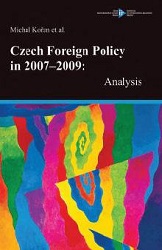The Far East in the Czech Foreign Policy
The Far East in the Czech Foreign Policy
Author(s): Rudolf Fürst
Subject(s): Political history, Economic policy, Government/Political systems, International relations/trade, Political behavior, Politics and communication, Comparative politics, Transformation Period (1990 - 2010)
Published by: Ústav mezinárodních vztahů
Keywords: Czech Republic; Foreign Policy; Far East; Economic Relations;
Summary/Abstract: This chapter deals with the region of East Asia, namely the People’s Republic of China (PRC), Japan, the Korean Republic (South Korea), the Democratic Republic of Korea (DPRK, North Korea), the Republic of China on Taiwan (ROC Taiwan), and includes also Mongolia and Vietnam. As East Asia lies far beyond the sphere of the specific priorities of the Czech foreign policy, the main concern of bilateral and multilateral ties is cooperation with booming Asian economies. However, such a long term prospect, which is parallel with similar prospects of all EU member countries, followed a common development with the former East Central European communist states, which were economically integrated within COMECON and politically dependent on the former Soviet Union’s Asian policies. Since 1989 and after the split of the Eastern bloc, Czechoslovakia, which was divided into the Czech Republic (ČR) and the Slovak Republic in 1993, developed its own autonomous Asian policy, which was no longer ideologically based and dependent on Moscow. Besides continual bilateral relations with East Asian communist states, the post-communist era thus brought new perspectives by establishing new relations with two new economically important partners – South Korea and Taiwan.
Book: Czech Foreign Policy in 2007–2009: Analysis
- Page Range: 275-285
- Page Count: 11
- Publication Year: 2010
- Language: English
- Content File-PDF

